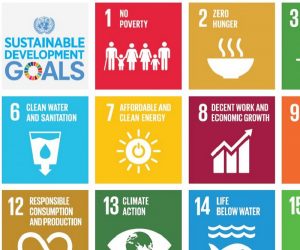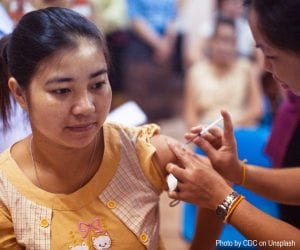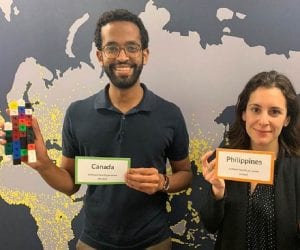In 2015, world leaders at the United Nations met to discuss and craft a vision to create a better world by 2030. To get there, they established 17 Sustainable Development Goals (SDGs) that are meant to be a universal call to action to end poverty, protect the planet, and ensure that all people enjoy peace and prosperity by 2030.
The SDGs recognize that the goals are all interconnected, and that action towards one goal will benefit other goals as well. The UN has stated that development must balance social, economic and environmental sustainability, and that progress must prioritize countries that are furthest behind.
The SDGs, similar to the goals of the UN as a whole, are meant to be a global partnership of all countries; a holistic approach to achieving sustainable development for all.
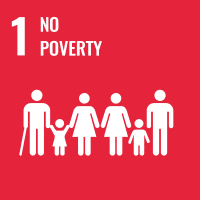 #1: No Poverty
#1: No Poverty
This first goal aims to eradicate poverty in all its forms. While the number of people living in extreme poverty has dropped by more than half between 1990-2015, there are still about 696 million people living on less than $1.90 a day. This leaves many struggling to meet basic human needs like food and clean drinking water.
While progress has been observed, it has been uneven. Countries like China and India have been able to lift millions out of poverty as they’ve rapidly industrialized. However, South Asia and sub-Saharan Africa have seen slower progress, and account for 68 percent of those living in extreme poverty today. Women are also more likely than men to be poor due to limited access to paid work, education and property ownership in many areas of the world.
The tangible targets of SDG #1 include halving the number of people living in poverty (by any definition, not just extreme) and implementing social protections to allow poor and vulnerable people to have basic needs covered.
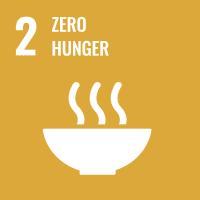 #2: Zero Hunger (No Hunger)
#2: Zero Hunger (No Hunger)
Although the number of undernourished people has dropped by nearly half in the past two decades, there are still 821 million people estimated to be chronically undernourished as of 2017, and extreme hunger and malnutrition continue to be a huge barrier to development in many countries.
The aim of this goal is to end all forms of hunger and malnutrition, especially in children, where 90 million children under five are still dangerously underweight.
The goal focuses on implementing sustainable agriculture, increasing support for small-scale farmers, and ensuring equal access to land, technology and markets. On a larger scale, there must be international cooperation in infrastructure and technology to improve agriculture productivity. With these solutions, it is possible for those in all parts of the world to have sufficient and nutritious food year-round.
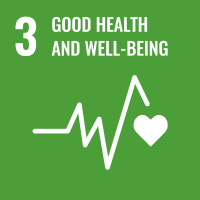 #3: Good Health and Well-Being
#3: Good Health and Well-Being
This goal focuses on promoting healthy lifestyles and providing modern, efficient healthcare for all, so that preventable illnesses continue to decrease around the globe. At least 400 million people still have no basic healthcare, and nearly 1.8 billion people live in settings where indefinite turmoil combined with weak governmental health systems make it more difficult to access quality care.
To address this goal, the U.N. has specific targets that cover all different aspects of healthcare. Targets to achieve by 2030 include things like reducing maternal mortality rates, ending preventable deaths in children under five, fighting communicable diseases like AIDS, tuberculosis and malaria, and supporting research and development of affordable vaccines and medicines.
Progress in this goal has been uneven, and while some countries have made impressive gains, there are many that have not, an issue that has only been exacerbated by the COVID-19 pandemic over the past two years.
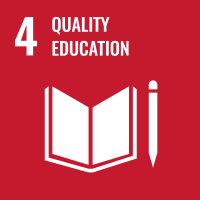 #4: Quality Education
#4: Quality Education
The world has seen incredible gains in access to education since 2000. In 2015, when the SDGs were established, the primary school enrollment rate in developing regions reached 91 percent, the number of children out of school had been cut in half and there were more girls in school than ever before.
But poverty, armed conflict and other systematic instabilities have led to an increase in the number of children out of school in Western Asia and Northern Africa, which is a worrying trend. And even in developing countries around the world that have seen improvement, one third of girls are still not in school and 59 million primary-aged children remain out of school.
By 2030, the goal is to have all children complete free, equitable and quality primary and secondary education. In addition to primary school, all children should have access to early childhood development care to prepare them for their formal education, as well as access to affordable technical or vocational programs, including university. Across the board, it is essential to prioritize equitable access amongst girls and vulnerable populations.
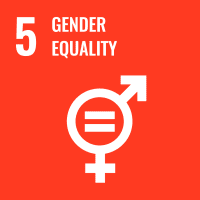 #5: Gender Equality
#5: Gender Equality
It is vital to work towards a world where women and men have equal footing; in fact, it’s proven that empowering women and girls helps economic development. This SDG focuses on addressing unequal labor rights, sexual violence and exploitation, unequal division of unpaid domestic care, and discrimination in public office.
To see progress, women need equal rights from property ownership to sexual and reproductive health to technology access. But the biggest shift in terms of policy is ensuring women’s full and effective participation and leadership in all levels of political, economic and public life.
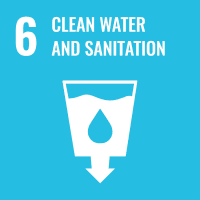 #6: Clean Water and Sanitation
#6: Clean Water and Sanitation
Water scarcity affects more than 40 percent of the world, an alarming figure that is expected to rise along with global temperatures. Dwindling water supplies are affecting every continent, with increasing drought and desertification accelerating this trend. By 2050, it is projected that more than 5 billion people will suffer recurring water shortages.
To address this as a planet, we must invest in water infrastructure and sanitation facilities, and work to protect and restore freshwater ecosystems. Currently, over 800 million people lack basic drinking water, and over two billion lack consistently accessible and safe drinking water.
Meanwhile, around 3.5 billion of the world’s population lacks safely managed sanitation services, and 1.5 billion have no sanitation services at all.
Having clean water and functioning sanitation systems are inherently linked. This SDG cites reducing pollution and eliminating hazardous chemical and raw sewage dumping as necessary steps on the way to improving overall water quality and access to drinking water. Working cooperatively between countries to efficiently use freshwater in a way to minimize scarcity is also at the center of achieving this SDG.
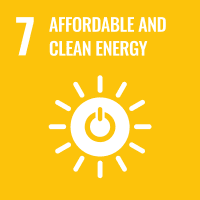 #7: Affordable and Clean Energy
#7: Affordable and Clean Energy
Our current reliance on fossil fuels is unsustainable and actively harmful to our planet, and as the population grows, so too will our energy needs. Climate change is one of the biggest threats to our survival, but access to energy is essential for all.
This SDG works towards universal access to electricity, which 10 percent of people still lack, while also shifting our reliance away from fossil fuels and towards renewable sources. Improving infrastructure in the developing world is a key priority in this goal, and international support must be used to create a truly efficient and sustainable energy system worldwide.
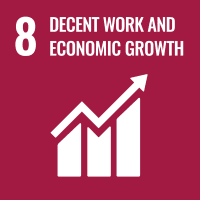 #8: Decent Work and Economic Growth
#8: Decent Work and Economic Growth
Having opportunities to earn money is key to lifting a nation out of poverty and creating a healthy economy that can see the success of many, not just a few at the top. In developing countries, the middle class made up more than 34 percent of total employment when the SDGs were written in 2015. But as the pandemic has raged on over the past two years, the world has seen slower growth, widening inequalities, and a mismatch of job availability and labor force.
This SDG strives to achieve full employment and decent work for all women and men by 2030. This goal aims for truly sustainable economic growth by encouraging entrepreneurship and job creation with policies focused on technological innovation development. Systematically, countries are encouraged to work towards expanding access to banking and financial services to create more equitable opportunities for all to benefit from entrepreneurship and innovation.
From a human rights standpoint, a key part of achieving this SDG comes with eradicating all forced labor, slavery and human trafficking. The importance of equal pay between men and women, in particular women migrants, is a component of this goal as well.
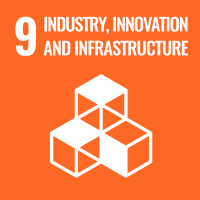 #9: Industry, Innovation and Infrastructure
#9: Industry, Innovation and Infrastructure
Investment in infrastructure and innovation are crucial drivers of economic growth and development. With over half the world population now living in cities, mass transport and renewable energy are becoming ever more important, as are the growth of information and communication technologies.
Technological progress is also interconnected with other SDGs, and is key to discovering long-term solutions to economic and environmental challenges, such as opening up new jobs and transitioning to more efficient energy systems.
To succeed in this SDG by 2030, nations must work together to promote sustainable industries and invest in scientific research. A big part of SDG #9 includes Internet access within the developing world, where nearly 2.8 billion people are still not online. Bridging this digital divide is the first step to making sure these countries have the baseline to foster innovation and access information as they grow.
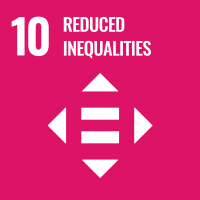 #10: Reduced Inequalities
#10: Reduced Inequalities
Over the past four decades, income inequality has risen sharply due to global deregulation and large transfers of public to private wealth in nearly all countries. In 2016, the top one percent of earners received 22 percent of global income, while the bottom 50 percent received only 10 percent of global income.
This SDG focuses on global policies that empower lower income earners and promote economic inclusion of all, and focus specifically on lifting up women and migrant workers.
To reverse the trend of income inequality, the world must improve regulation and monitoring of financial markets, encourage direct investment in developing nations, and facilitate safe migration and mobility for all.
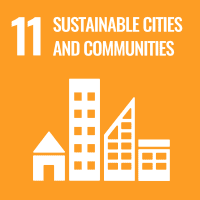 #11: Sustainable Cities and Communities
#11: Sustainable Cities and Communities
Two-thirds of humanity, or 6.5 billion people, are expected to live in an urban environment by 2050. It is vital for the health of the planet and success of our global connectedness that the cities of the future can function more sustainably than the cities of 2022. Right now, cities occupy three percent of the Earth’s landmass, yet account for a whopping 70 percent of energy consumption and carbon emissions are from urban areas.
Making the cities of the future sustainable means creating safe and affordable housing, accessible transport systems and green spaces. And on a larger scale, sustainable development means reducing cities’ overall environmental impact, building resilient urban economies, and utilizing urban planning to create effective spaces.
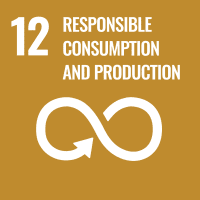 #12: Responsible Consumption and Production
#12: Responsible Consumption and Production
This SDG boils down to reducing our ecological footprint by using fewer overall resources, and allocating the resources we do use in a smart way, so that we are wasting less and giving more people a fair share.
The biggest factor in achieving this goal is agriculture, which accounts for close to 70 percent of all freshwater for human use. However, despite this huge footprint, nearly 1.25 billion tons of food go to waste each year, while at the same time almost 2 billion people go hungry or undernourished.
In addition to changing our consumption framework, the efficient management of our shared natural resources and safe disposal of toxic waste are also important stepping stones to achieving this goal.
The other side of this goal is that a large share of the population still consumes far too little to meet even their basic needs. Quantifiably, this goal aims to cut global food waste by half, which will create increased food security, more efficient supply chains and a more resource-efficient economy worldwide.
 #13: Climate Action
#13: Climate Action
This is perhaps the most wide-reaching SDG in that it affects the entire world population and has significant consequences if no action is taken. Every part of the Earth is already experiencing the drastic effects of climate change—the annual economic losses from climate-related disasters already reach the hundreds of billions of dollars, and climate-related geo-physical events killed 1.3 million people between 1998 and 2017.
This goal prioritizes funding assistance to developing countries so that they are able to invest in low-carbon development and sustainable natural resources management. This goal is one that requires urgent and collective action, but that has many opportunities to drastically change our future. Bold climate action could trigger billions in economic benefits, as well as creating 24 million more jobs in the sustainable energy sector alone.
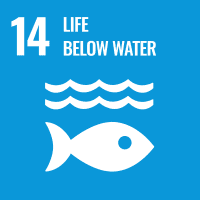 #14: Life Below Water
#14: Life Below Water
Healthy ocean ecosystems are essential to our continued existence, and to counterbalance the effects of climate change. Over 3 billion people depend on marine and coastal biodiversity for their livelihoods, yet the current trends indicate 90 percent of the world’s fish stocks are being overfished.
Marine contamination is also a component being addressed in this goal. The aim of SDG #14 is to sustainably manage and protect marine and coastal ecosystems from pollution and overfishing, as well as address the impacts of ocean acidification, which has risen 26 percent since the industrial revolution. Ocean health is one of the biggest ways we can help to lessen the impacts of climate change.
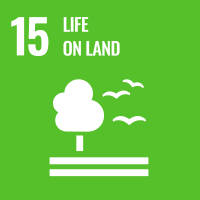 #15: Life on Land
#15: Life on Land
The next SDG focuses on all of our ecosystems above the water, which are just as important for our continued sustenance. Many of the targets for this goal look at forests, which cover 30 percent of the Earth’s surface and provide livelihoods to around 1.6 billion people, all while playing a vital role in combating climate change by providing clean air and water. Each year we continue to lose forests to desertification, disproportionately in poorer communities.
Conserving all land, from forests to deserts to mountains, is at the core of achieving this goal. This also includes cracking down on illegal trading and wildlife trafficking, which reduces biodiversity and fuels conflict and corruption.
The end goal is sustainable use of our ecosystems while preserving biodiversity in all of them, from forests to mountains to deserts.
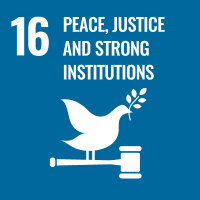 #16: Peace, Justice and Strong Institutions
#16: Peace, Justice and Strong Institutions
Without stability, peace and equal human rights, accomplishing the Global Goals by 2030 is impossible. Yet many regions in the world continue to fall into cycles of conflict and violence that must be addressed on an international level, the most dramatic recent example of this being the Russian invasion of Ukraine that started on February 24, 2022.
The targets of this SDG aim to work with governments and communities to end conflict and insecurity. In addition, targets mention reducing sexual violence, crime, exploitation, and torture, which often run rampant in regions of conflict. Lastly, reducing the flow of illicit arms and strengthening the participation of developing countries in global governance institutions are important aspects in achieving this goal.
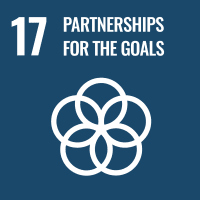 #17: Partnerships for the Goals
#17: Partnerships for the Goals
Without cohesive enforcement and cooperation, none of the SDGs are possible. From purely a financial perspective, the UN estimates achieving SDGs will require $5-7 trillion in annual investment. Luckily, the world is more interconnected than ever. Continuing to improve access to technology is key to achieving successful global partnership.
Perhaps the biggest theme throughout the SDGs, and an inherent part of accomplishing this goal, is making a concerted effort to help developing countries grow sustainably and in a way that promotes safety and security for their citizens. This also extends to promoting international trade and increasing exports within developing countries.
This goal was included to promote cooperation and discourage competition on the way to achieving the SDGs, and make sure that by 2030 we are on a much more sustainable, safe and successful path forward.



